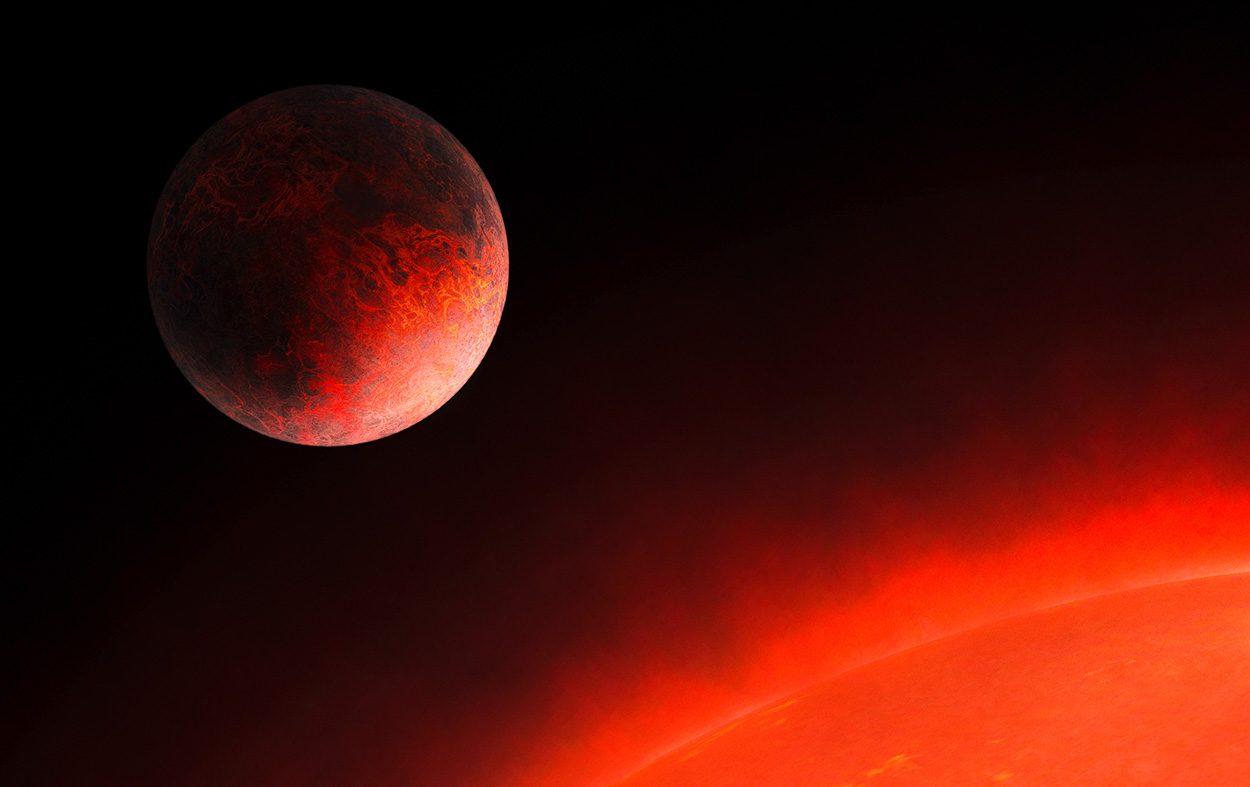The smaller and lighter an exoplanet, the more difficult it is to track it using common methods. Astronomers have now discovered one of the lightest and smallest known rocky exoplanets about 31 light-years away. Planet GJ 367b is the size of Mars and only half the mass of Earth. From the ratio of mass and volume, the researchers concluded that the iron core of this exoplanet should occupy most of its interior – similar to Mercury, the core makes up 80 percent of the diameter. However, GJ 367b is not friendly to life: since it orbits near its star, a red dwarf, its surface temperature reaches 1,500 degrees.
Since the discovery of the first exoplanet in the 1990s, astronomers have tracked thousands of other worlds around exotic stars. Some were revealed by the effects of gravity on their star, others made themselves noticeable by the fact that they passed directly in front of their star and thus periodically darkened. In general, large exoplanets close to their star are easier to find using these methods than small planets. Rocky planets of Earth size or even smaller, which are particularly interesting to astronomy, are difficult to detect, because they only exert low gravitational effects on their stars and with bright stars, transits are often difficult and difficult to see in the curve of light.
Telltale wanders around a red dwarf
But red dwarfs – a very common type of star, especially in our close cosmic environment, provide better opportunities for tracking such small objects to planets. These relatively cool stars glow faintly less than 60 percent of the radius of the Sun. “The transit signal for a planet orbiting a M dwarf star is relatively larger than for a planet of the same size around a Sun-like star,” Christine Lamm of the Technical University of Berlin and colleagues explain. This opens up the opportunity to identify even very small planets that orbit near their star. Astronomers have discovered a candidate for such a sub-Earth with the help of the Transiting Exoplanet Survey (TESS) just 31 light-years away.
Observations suggested that there might be a planet around the nearby red dwarf GJ 367 with a size of only 0.75 of the Earth’s radius.
In order to investigate this suspicion and learn more about this potential exoplanet, Lamm and her team evaluated more TESS data and also observed the candidate planet and its star using the HARPS spectrometer of the European Southern Observatory’s La Silla Observatory in Chile. “We ran several tests to make sure this candidate wasn’t a false positive,” they explained. But new observations confirmed that the red dwarf’s light regularly darkens every 0.32 days. From the duration and shape of this drop in the light curve, the astronomers concluded that this shadow must have come from a planet.
Small, dense and very hot
As the analyzes showed, there is a planet around the red dwarf with a diameter of about 9,000 km – hardly larger than that of Mars. With only about 0.55 Earth masses, christened GJ 367b is also one of the lightest exoplanets known to date. “From the exact determination of its radius and mass, we conclude that GJ 367b must be a rocky planet,” says Lamm. “It belongs to the terrestrial sub-earth and takes us one step further in the search for a second earth.” In terms of its climate, GJ 367b is not exactly Earth-like. It orbits its star in a very close orbit and only takes 0.32 days for one orbit – so a year in it only takes about eight hours. Although its central star is relatively cool and faint, the planet receives 576 times as much radiation from its star as Earth. As a result, temperatures on its day side are nearly 1500°C. “It’s hot enough to melt or vaporize the silicate and the metallic iron,” the astronomers explained.
From the mass and size of GJ 367b, the researchers were also able to determine the density of the planet. It is 8.1 grams per cubic centimeter, which is much higher than other exoplanets of similar size. “The higher density suggests that this planet is dominated by an iron core,” Lamm’s colleague Szilard Sismadia explains. According to the team’s calculations, this mineral core could occupy 85 percent of the planet’s radius. “In this it resembles Mercury, which iron and nickel disproportionately distinguish from all other celestial bodies in the solar system.” The circles are not yet explained.
Cowell: Christine Lamm (TU Berlin) et al, Science, doi: 10.1126/science. aay3253

“Alcohol buff. Troublemaker. Introvert. Student. Social media lover. Web ninja. Bacon fan. Reader.”






More Stories
The Academy of Sciences has 34 new members
Delivery room pioneers, pro mountain biking tips, science with beer and sausages – Südwestpfalz-News
Red eyes – what to do if you have conjunctivitis? Allergies can also be a trigger